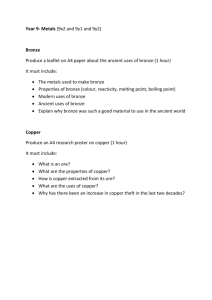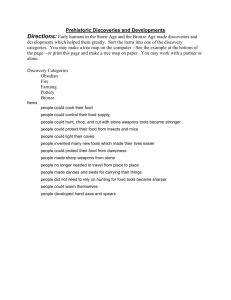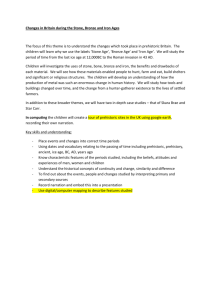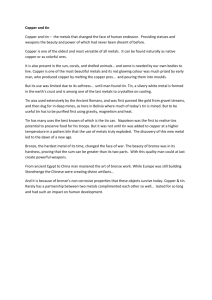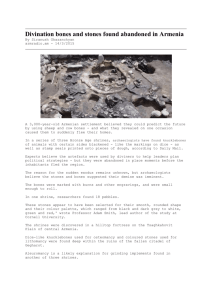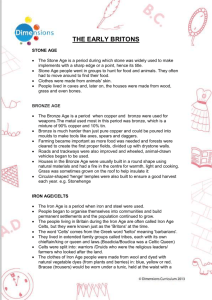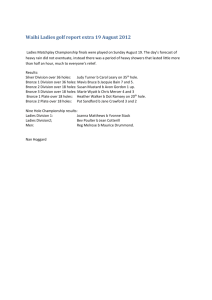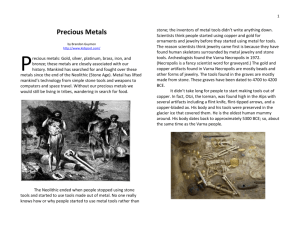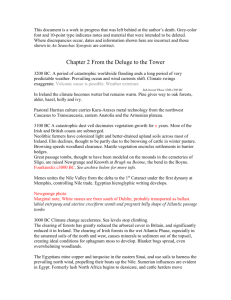The-Bronze-Age-in-Ireland
advertisement
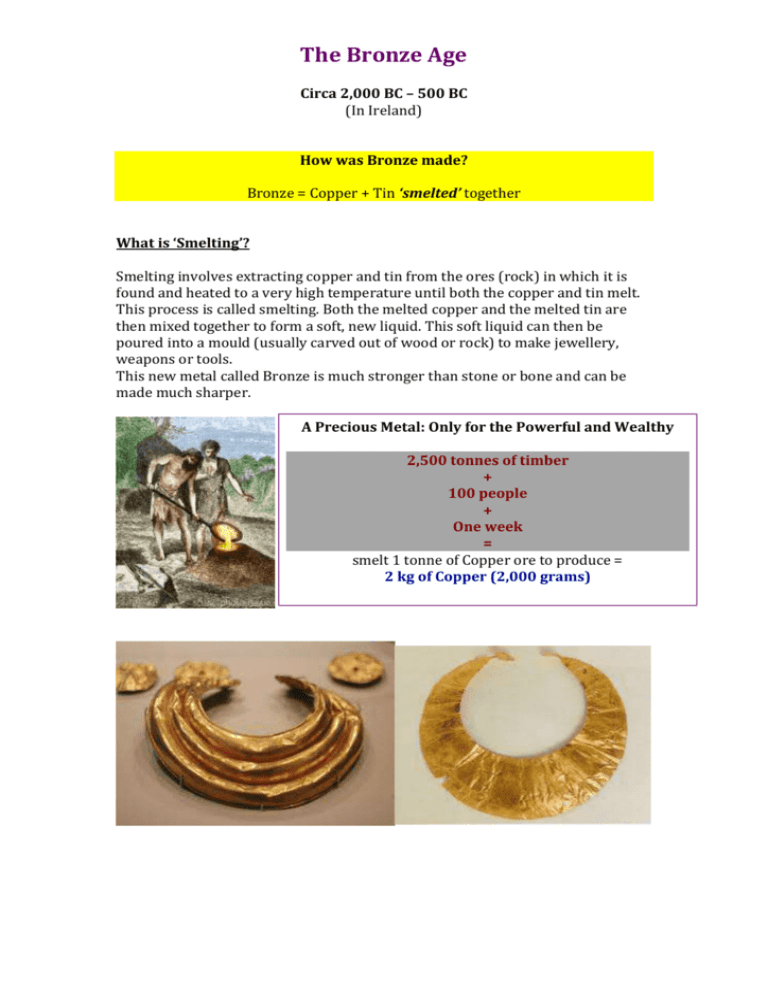
The Bronze Age Circa 2,000 BC – 500 BC (In Ireland) How was Bronze made? Bronze = Copper + Tin ‘smelted’ together What is ‘Smelting’? Smelting involves extracting copper and tin from the ores (rock) in which it is found and heated to a very high temperature until both the copper and tin melt. This process is called smelting. Both the melted copper and the melted tin are then mixed together to form a soft, new liquid. This soft liquid can then be poured into a mould (usually carved out of wood or rock) to make jewellery, weapons or tools. This new metal called Bronze is much stronger than stone or bone and can be made much sharper. A Precious Metal: Only for the Powerful and Wealthy 2,500 tonnes of timber + 100 people + One week = smelt 1 tonne of Copper ore to produce = 2 kg of Copper (2,000 grams) 2 [THE BRONZE AGE] Cooking: The Fulacht Fiadh A rectangular hole was dug in the ground The hole was lined with stones and pieces of wood After pouring water into this hole, stones heated over a fire were then placed in the water to bring it to the boil Meat was then covered in straw and placed in the boiling water Wooden sticks were used to hold the hot stones Tools made from Bronze: 1) Sickles were used for cutting grass, wheat & barley 2) Swords were first made during the Bronze Age 3) Metal axes for cutting down trees Housing: Same as Neolithic houses except: a) They began to build walls around their houses to protect them from wild animals or even other people. b) They may also have done this to keep their domesticated animals in. The Bronze Age Burial Customs: Wedge Tombs: o Vertical stones supporting a large flat stone at an angle o Looked like an angular wedge from the side o Body or cremated remains buried underneath Cist Graves: A grave in the ground surrounded by long, flat stones. Body was placed inside the grave, usually in a crouched position. Also, ornaments and utensils found in the grave. A large flat stone was then placed on top of the grave Standing Stones: Some cist graves found underneath single, large standing stones These large, single standing stones are called monoliths Usually aligned in some significant way with the sun, moon or stars 4 [THE BRONZE AGE]
